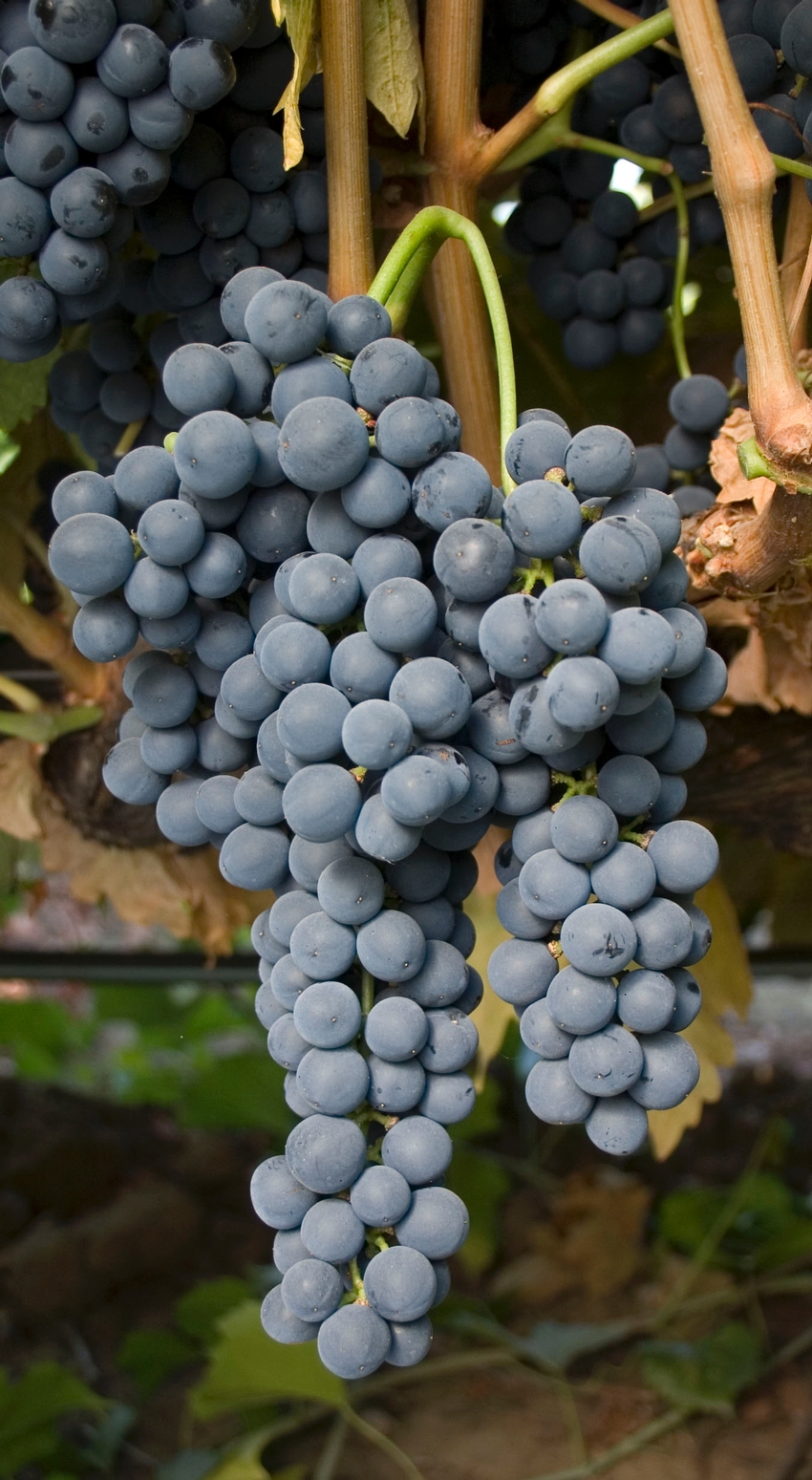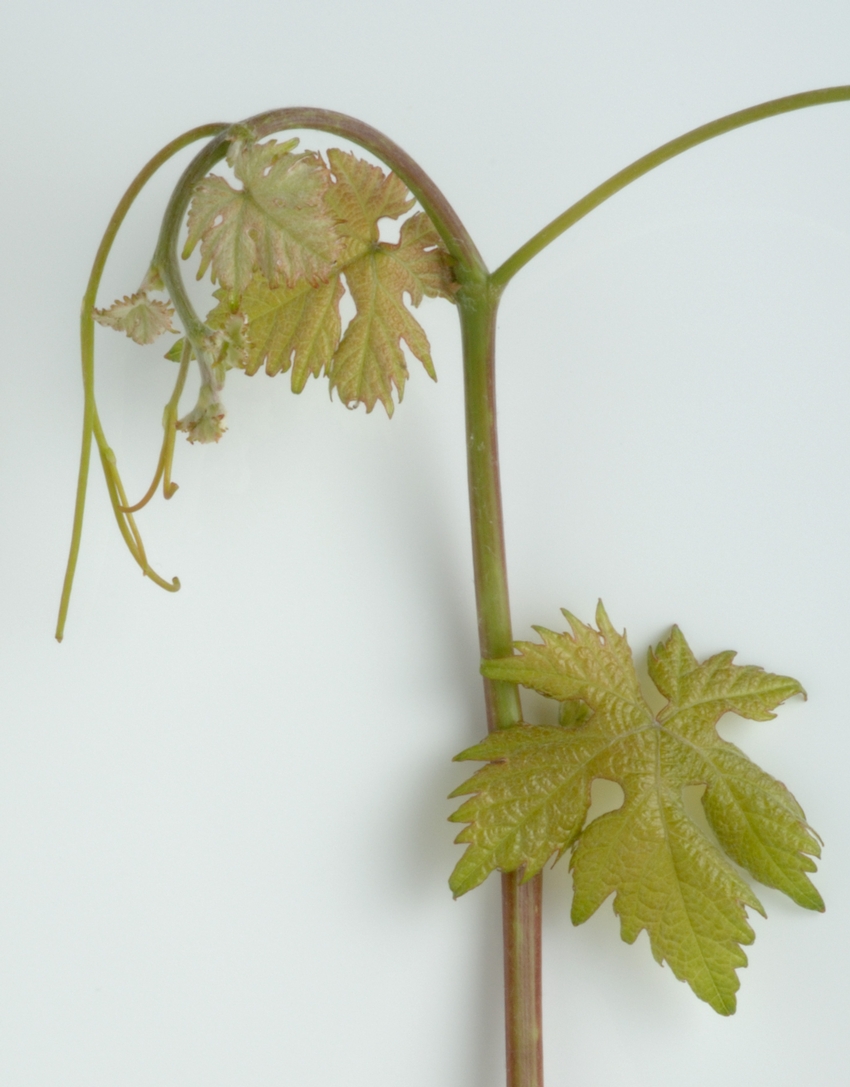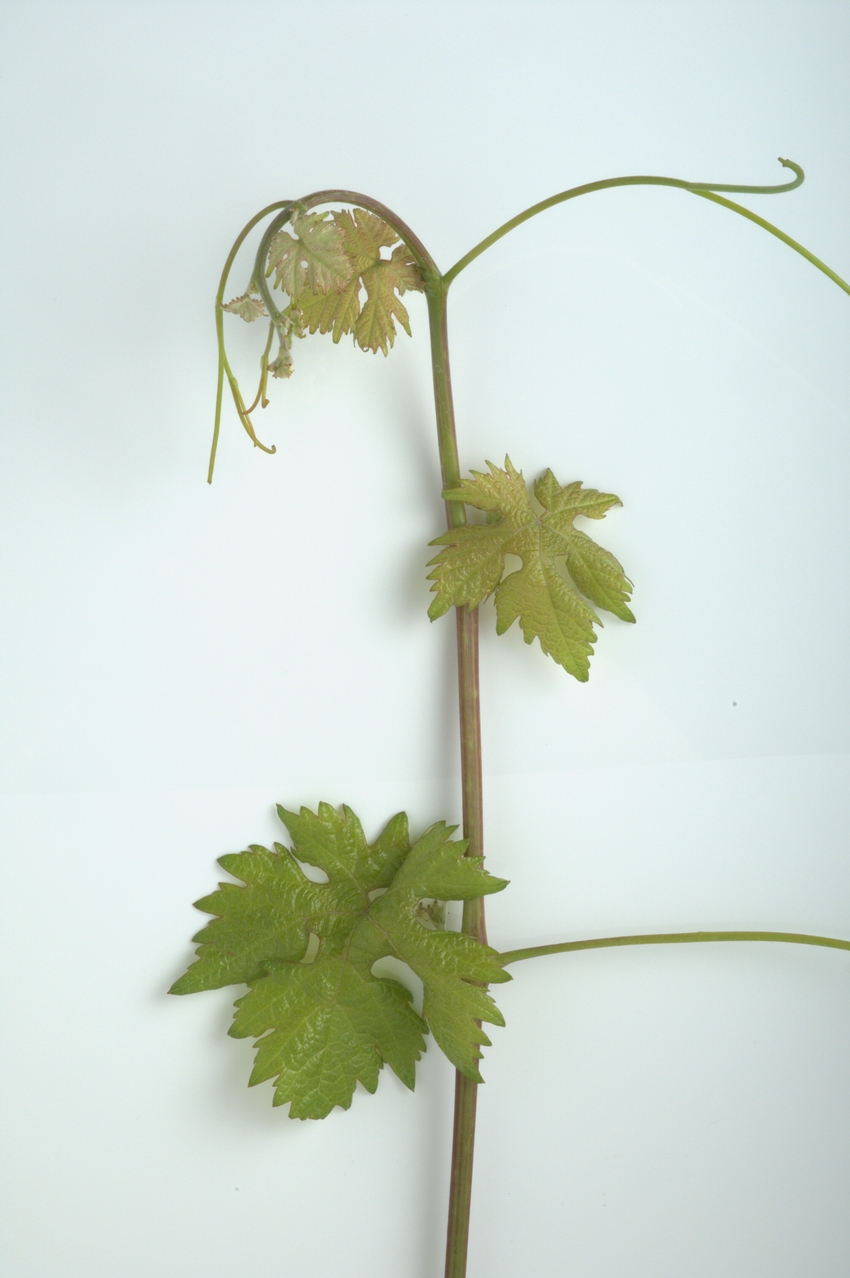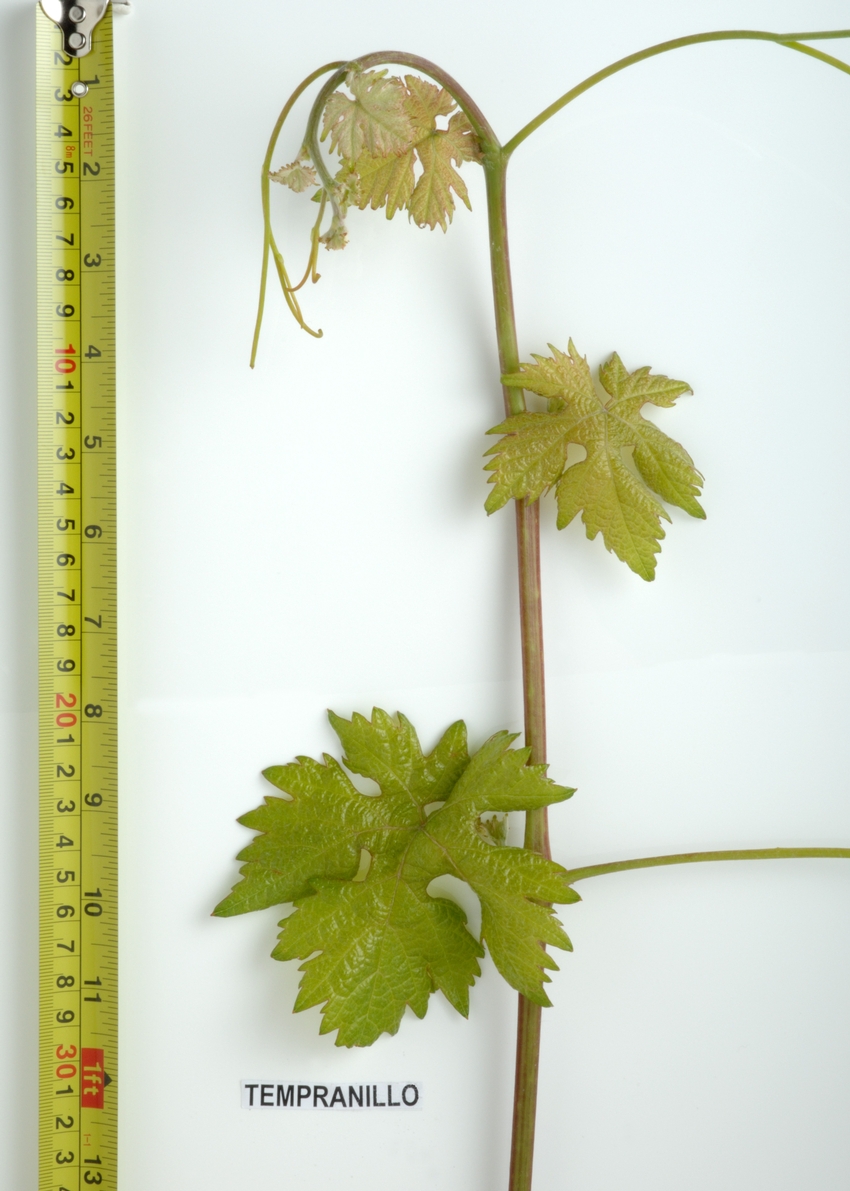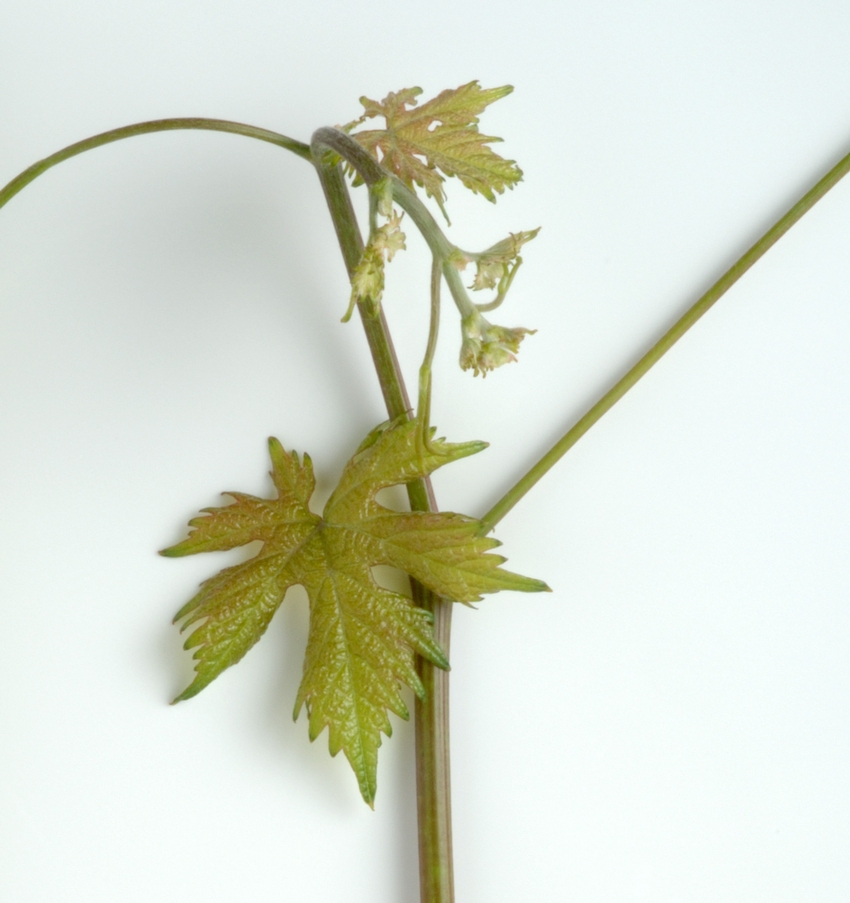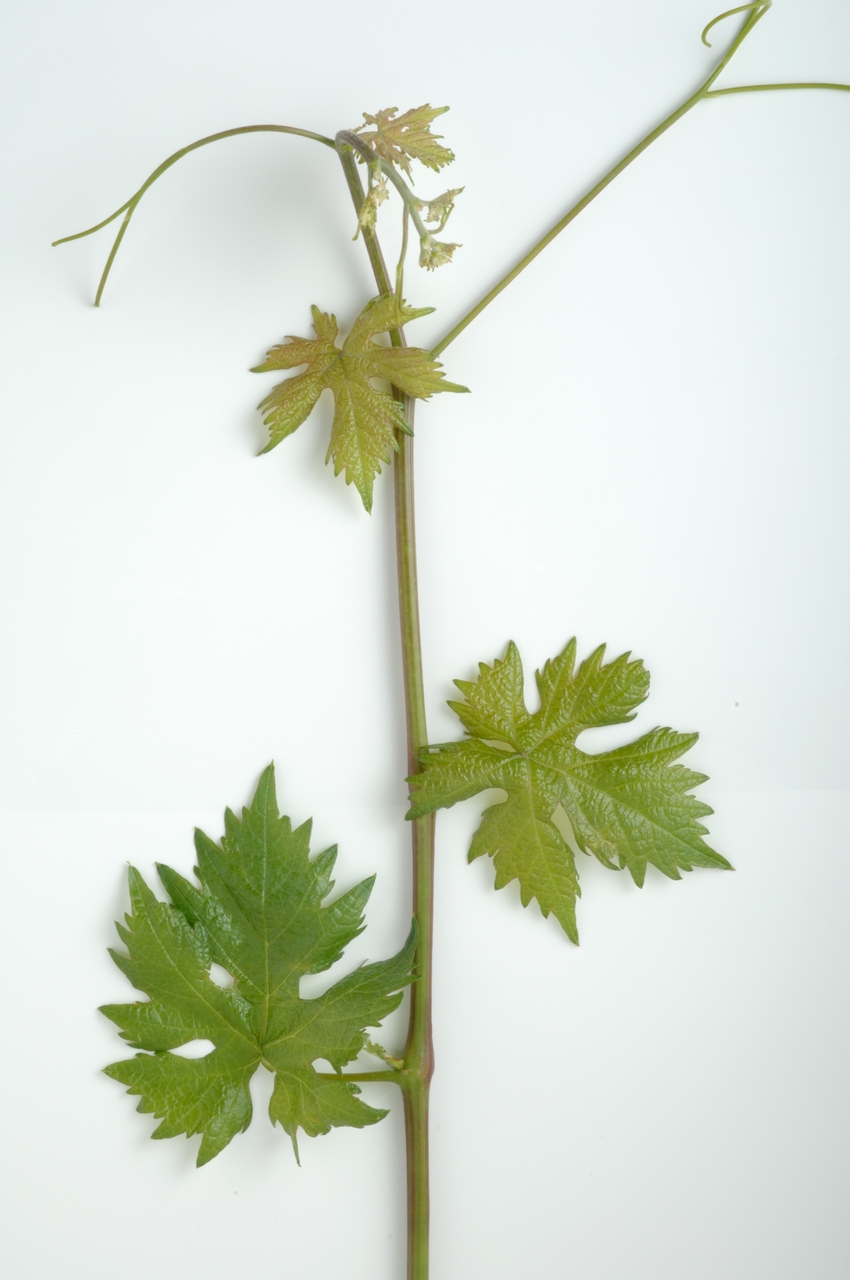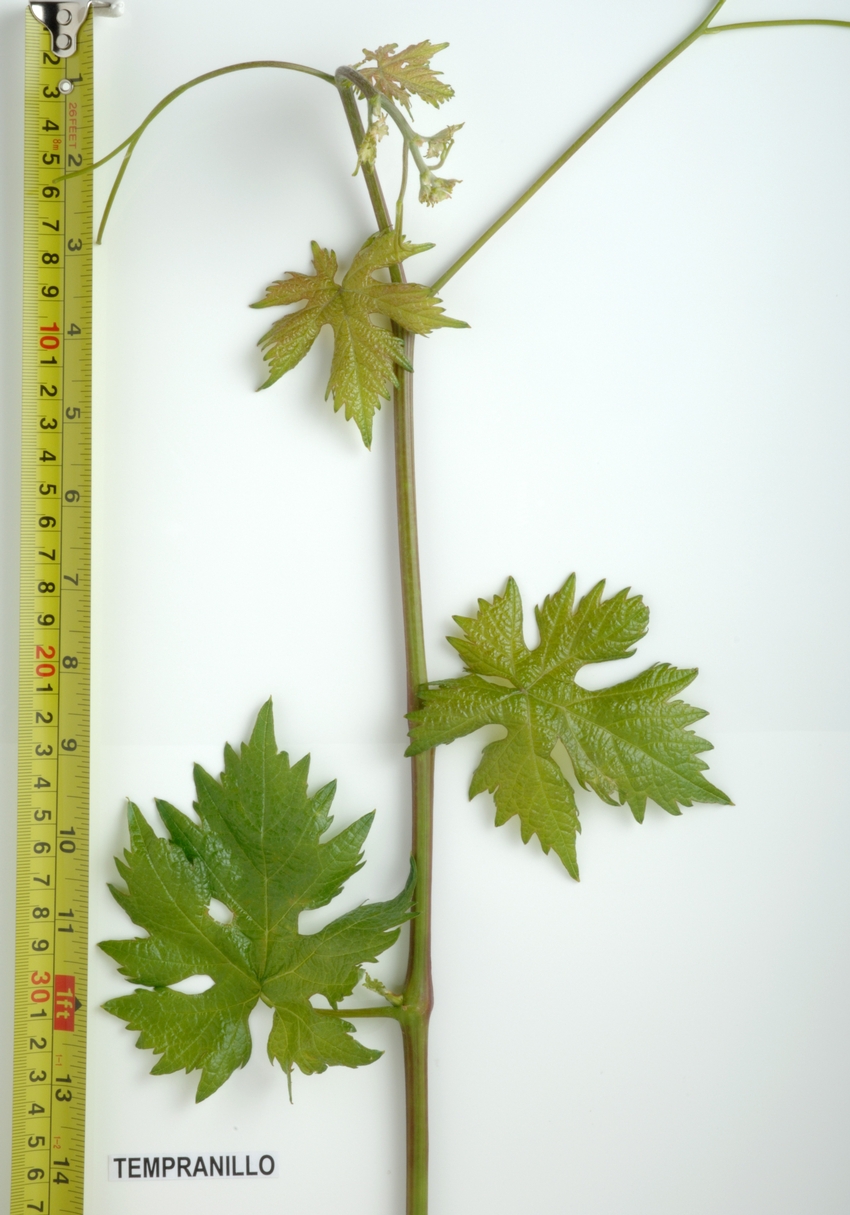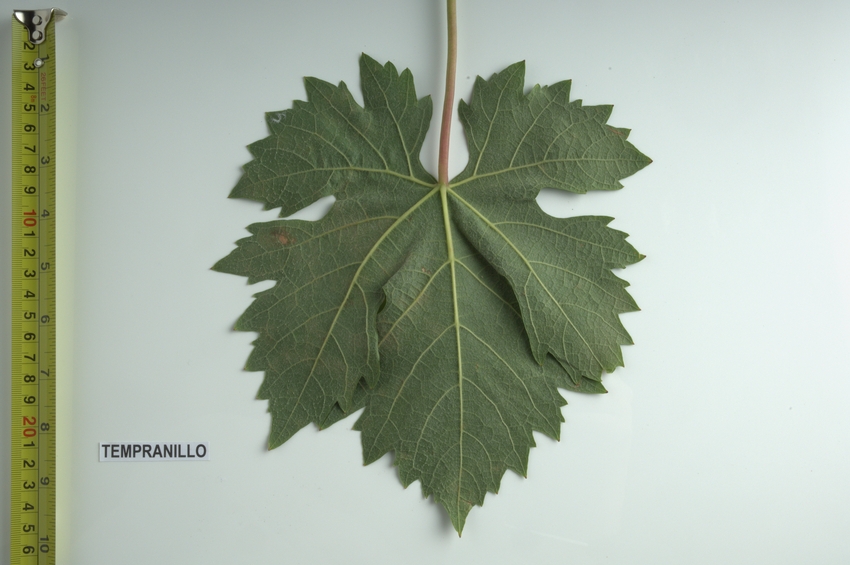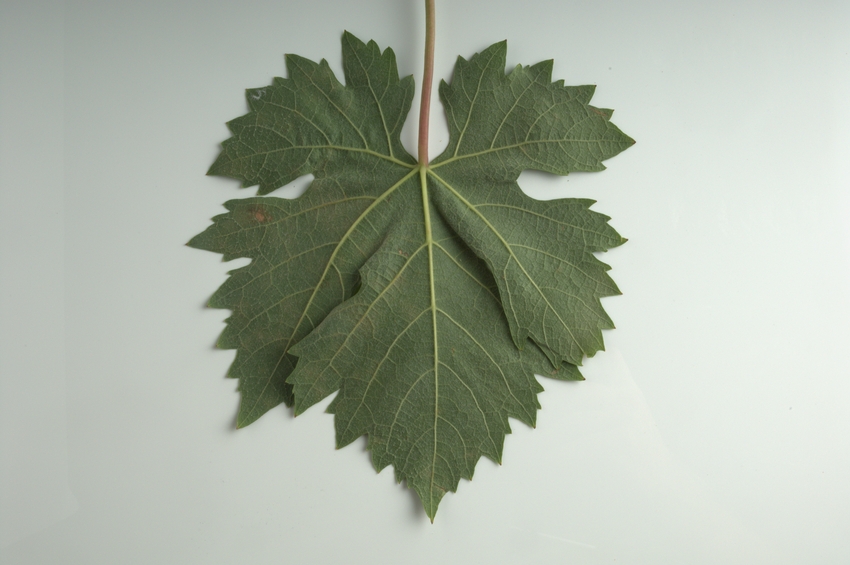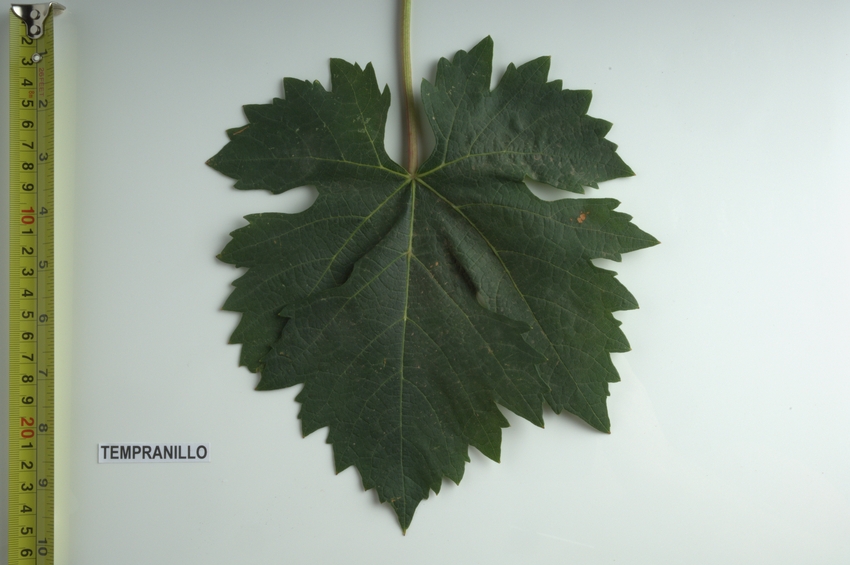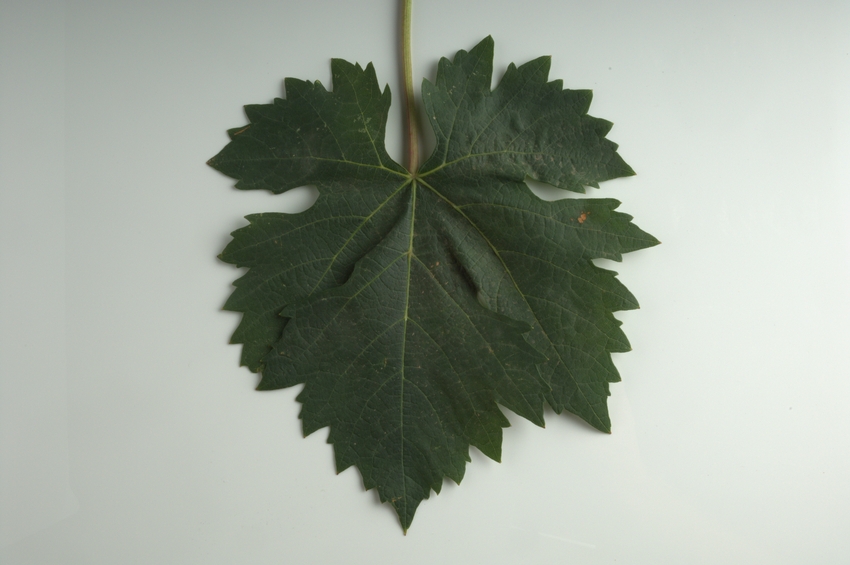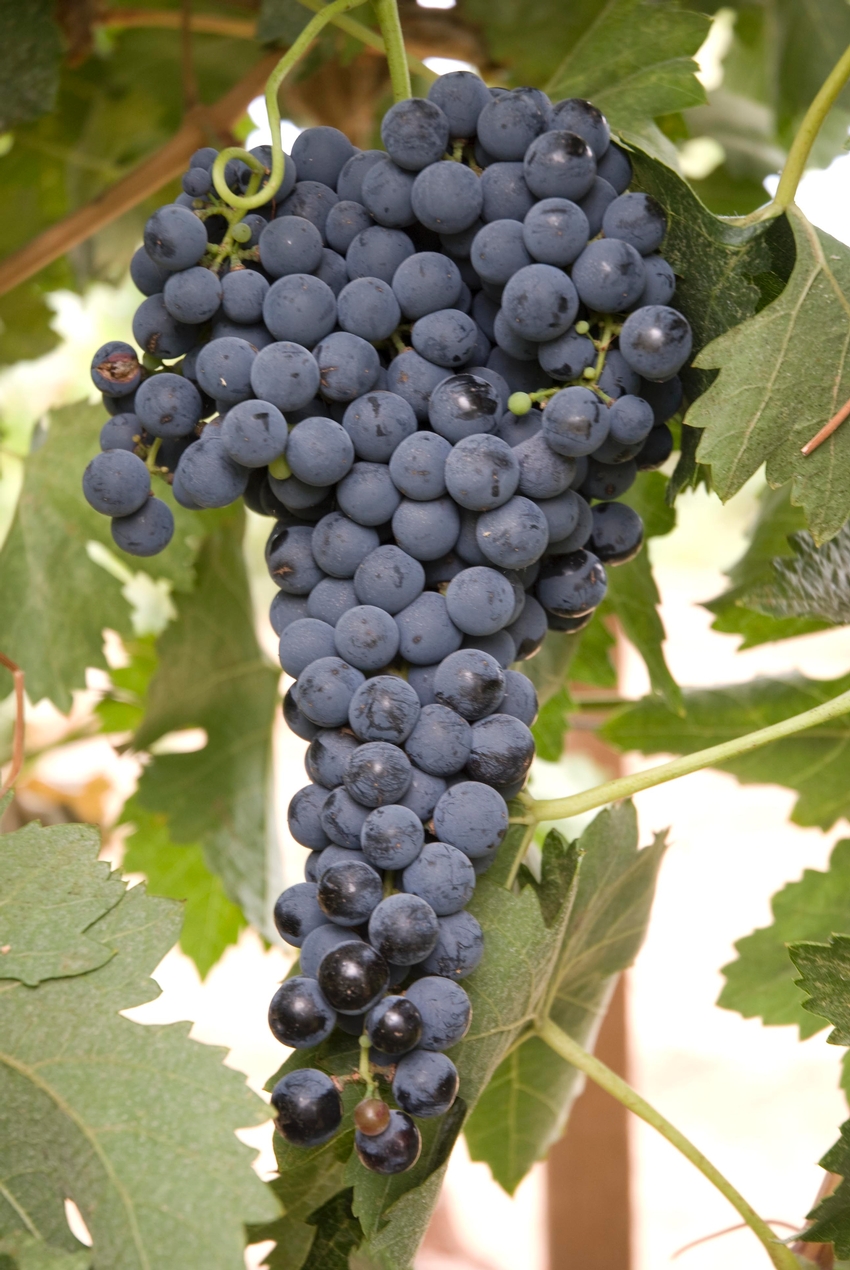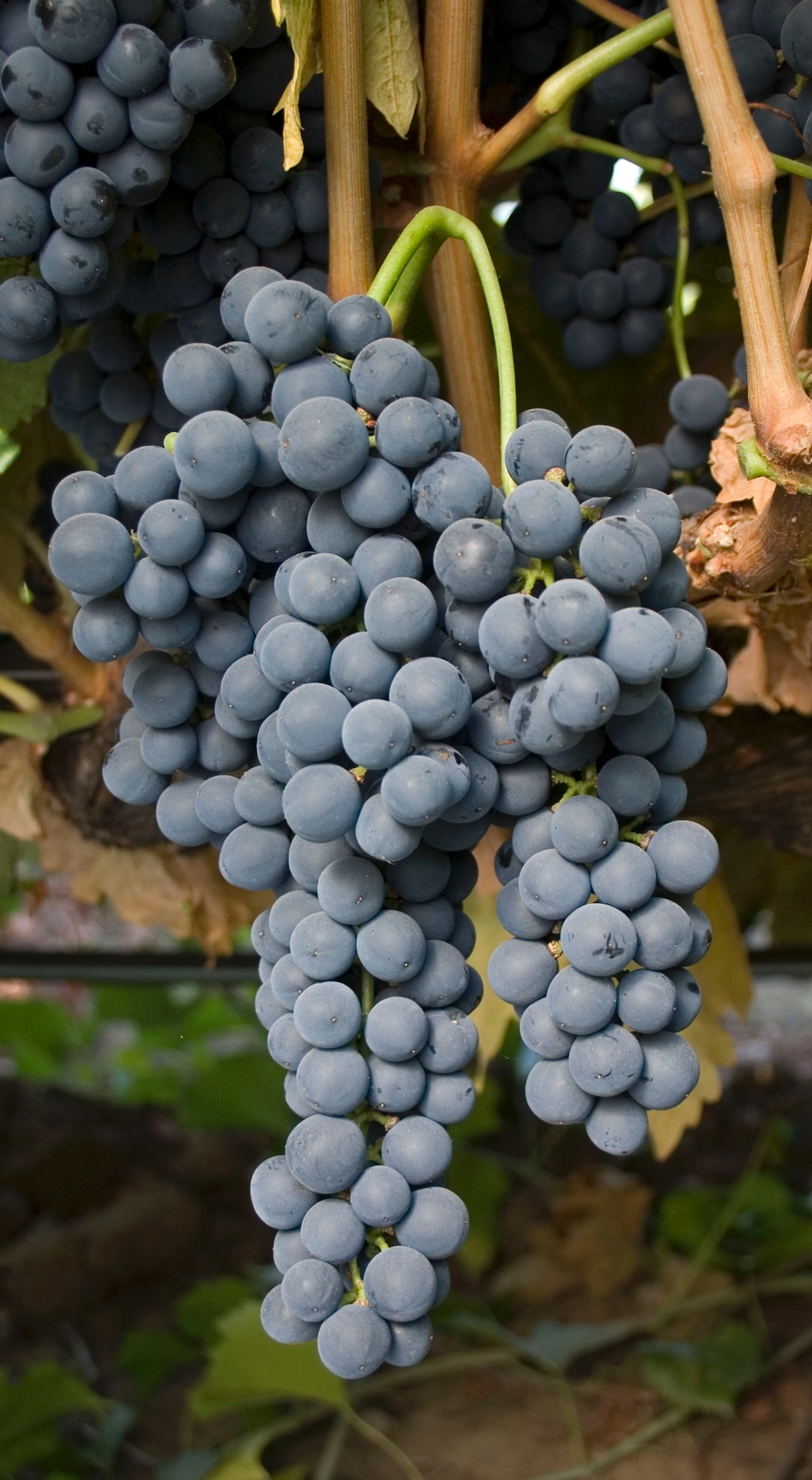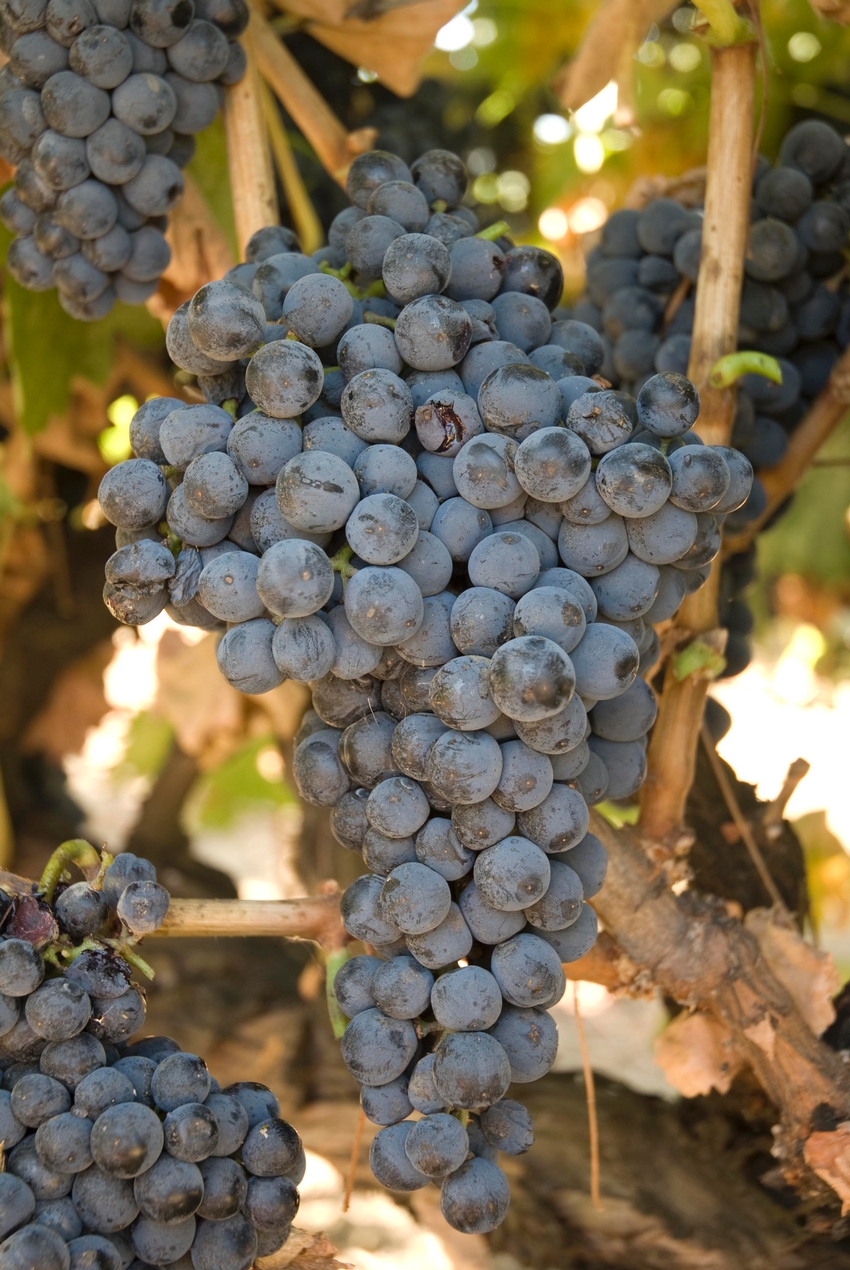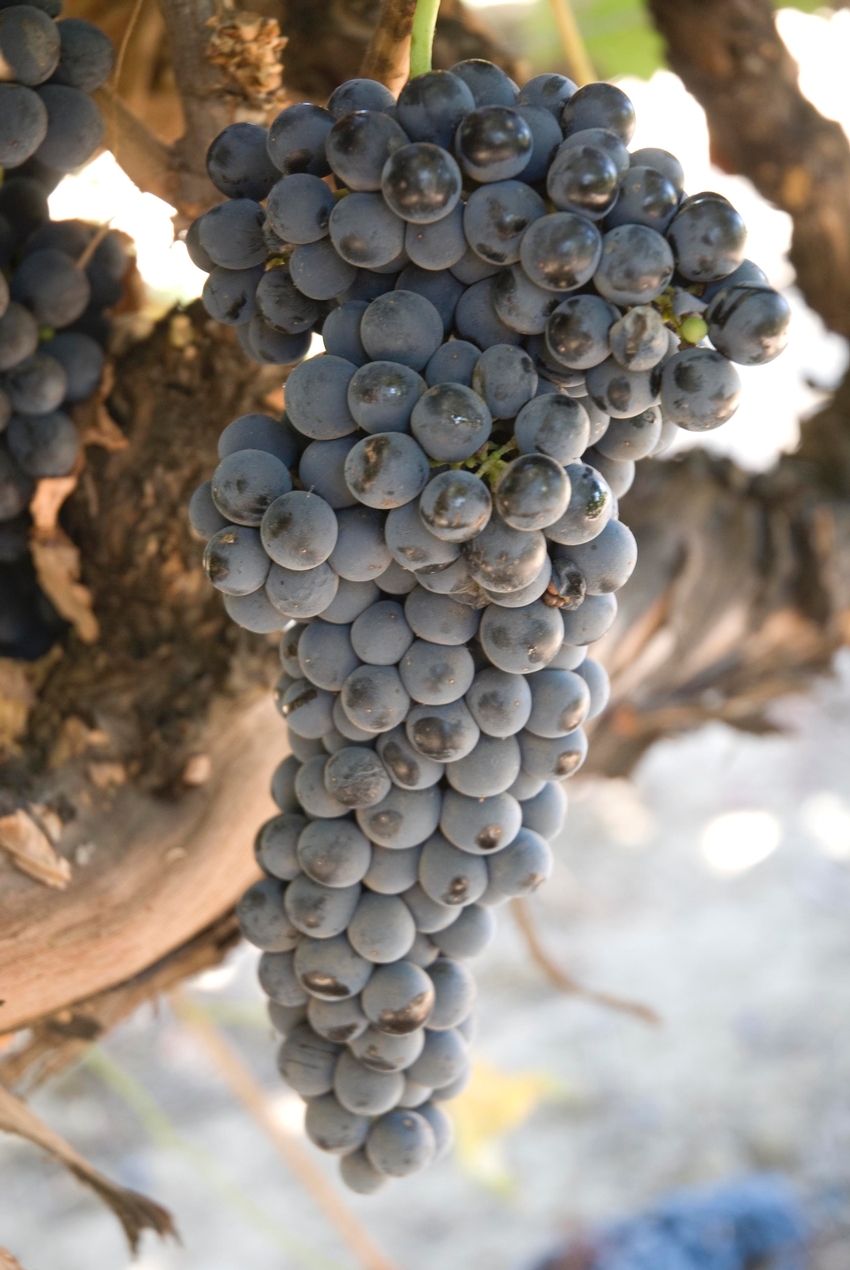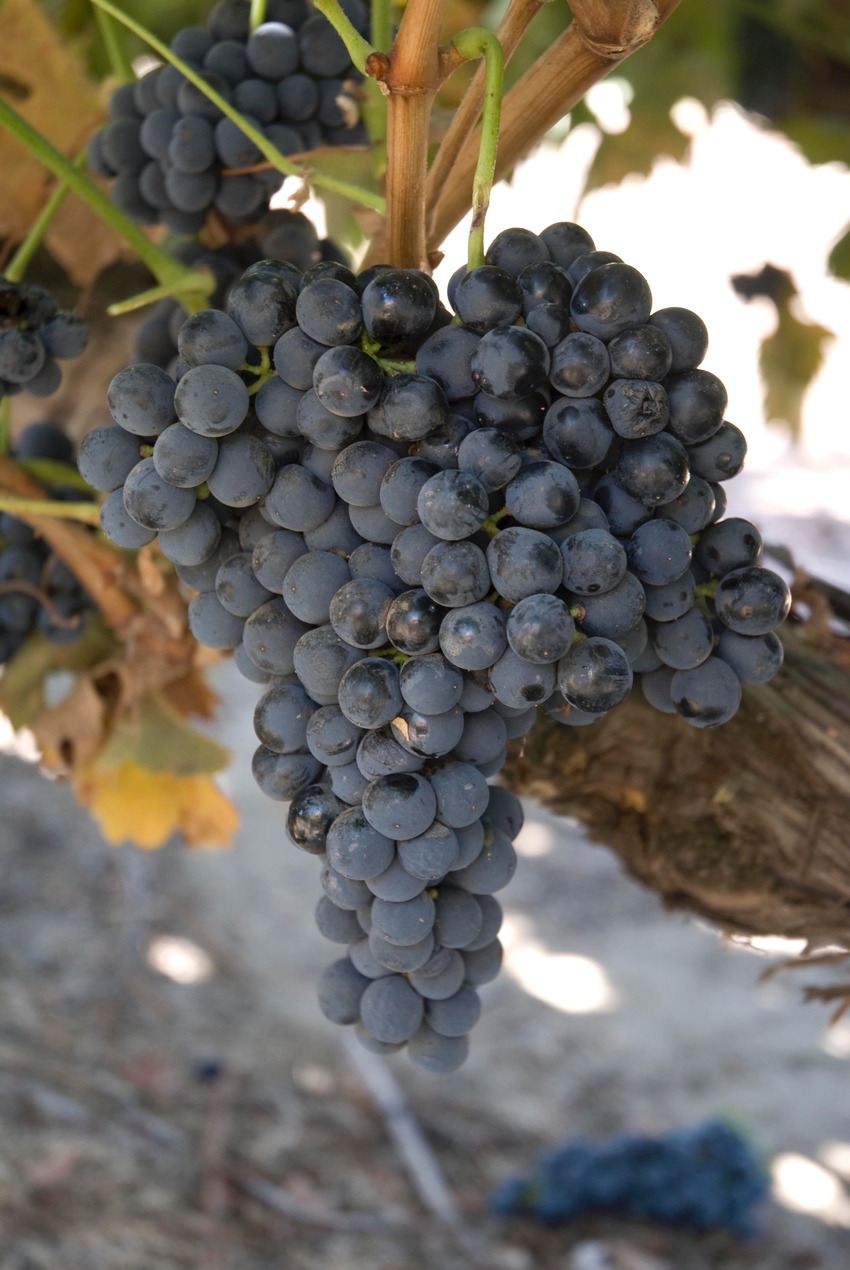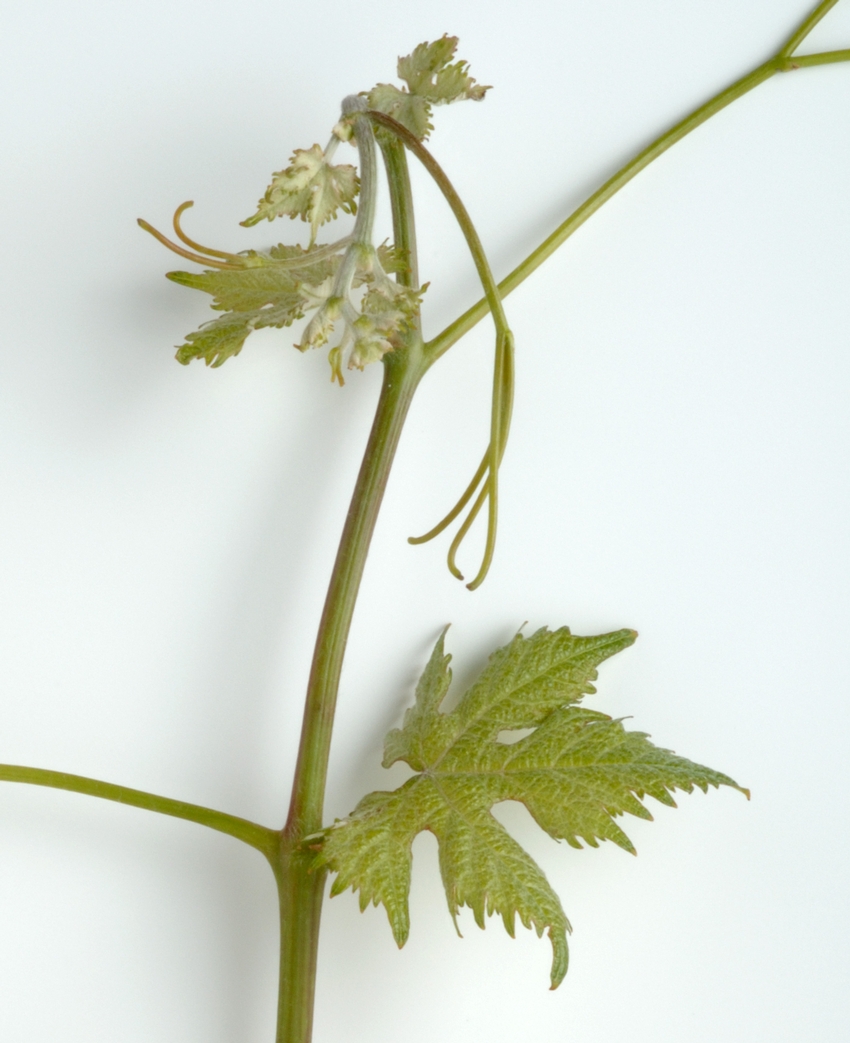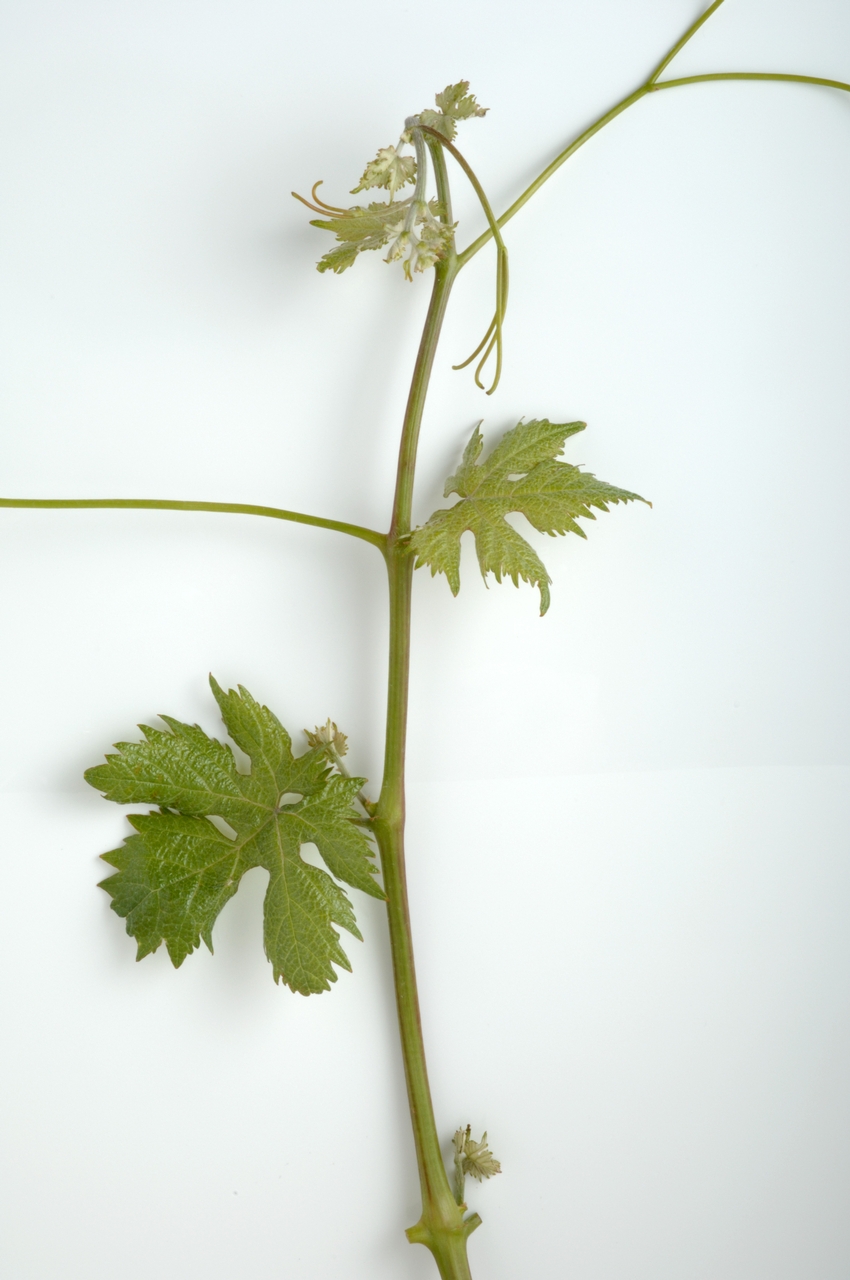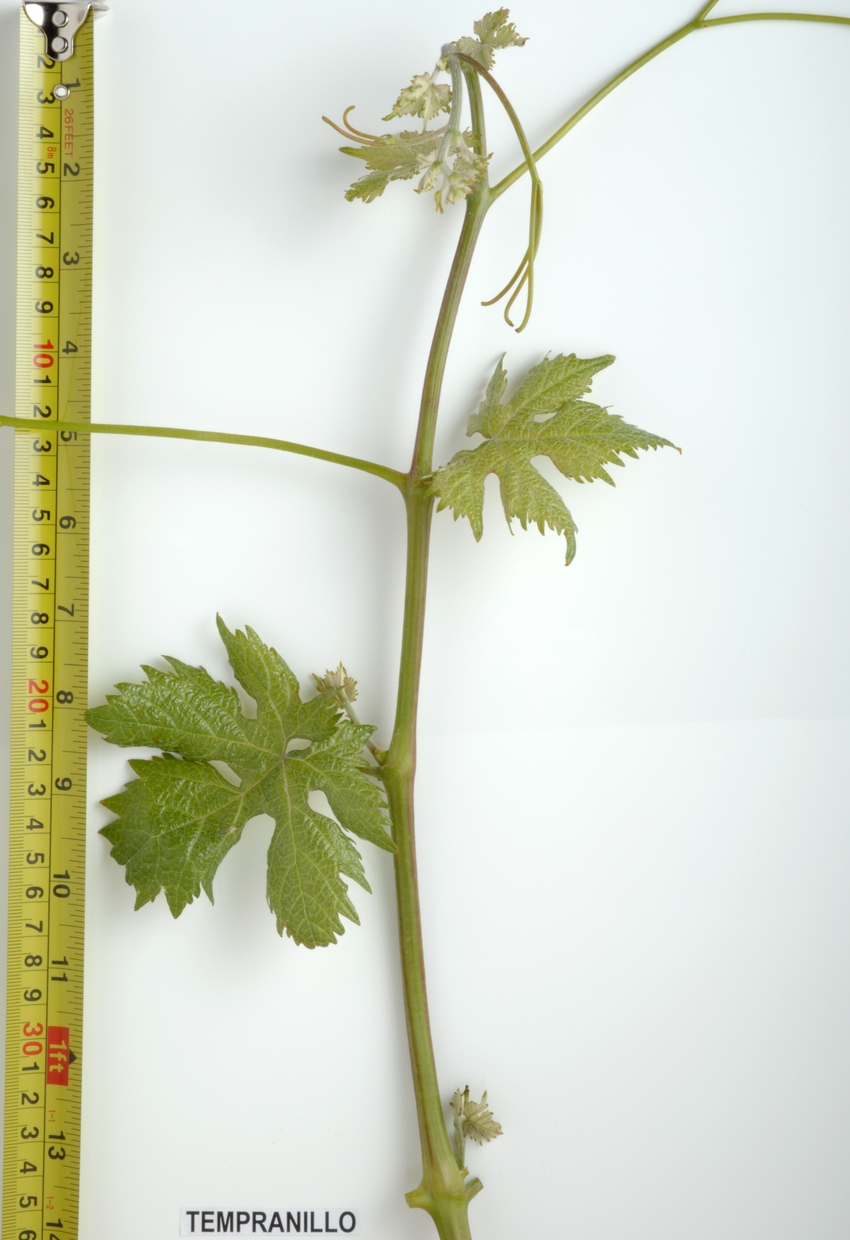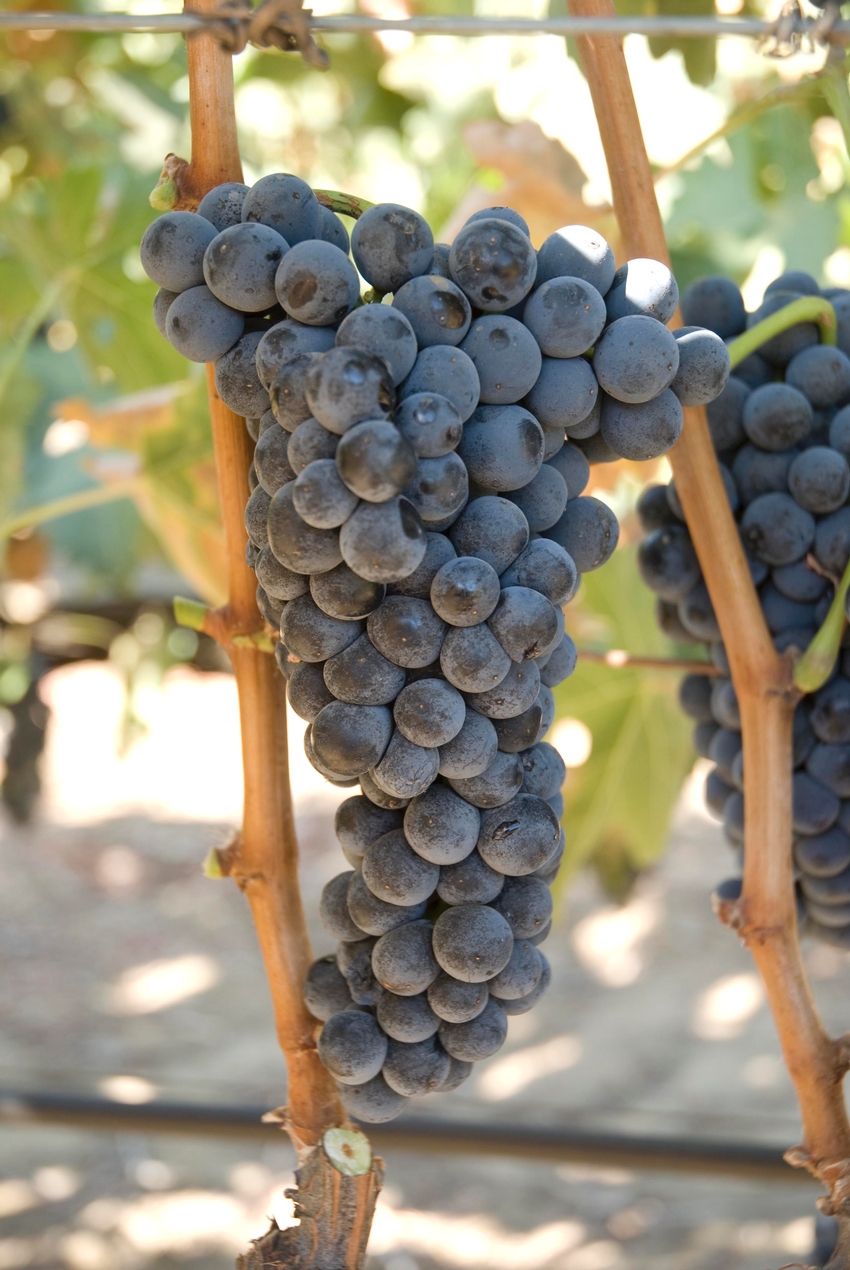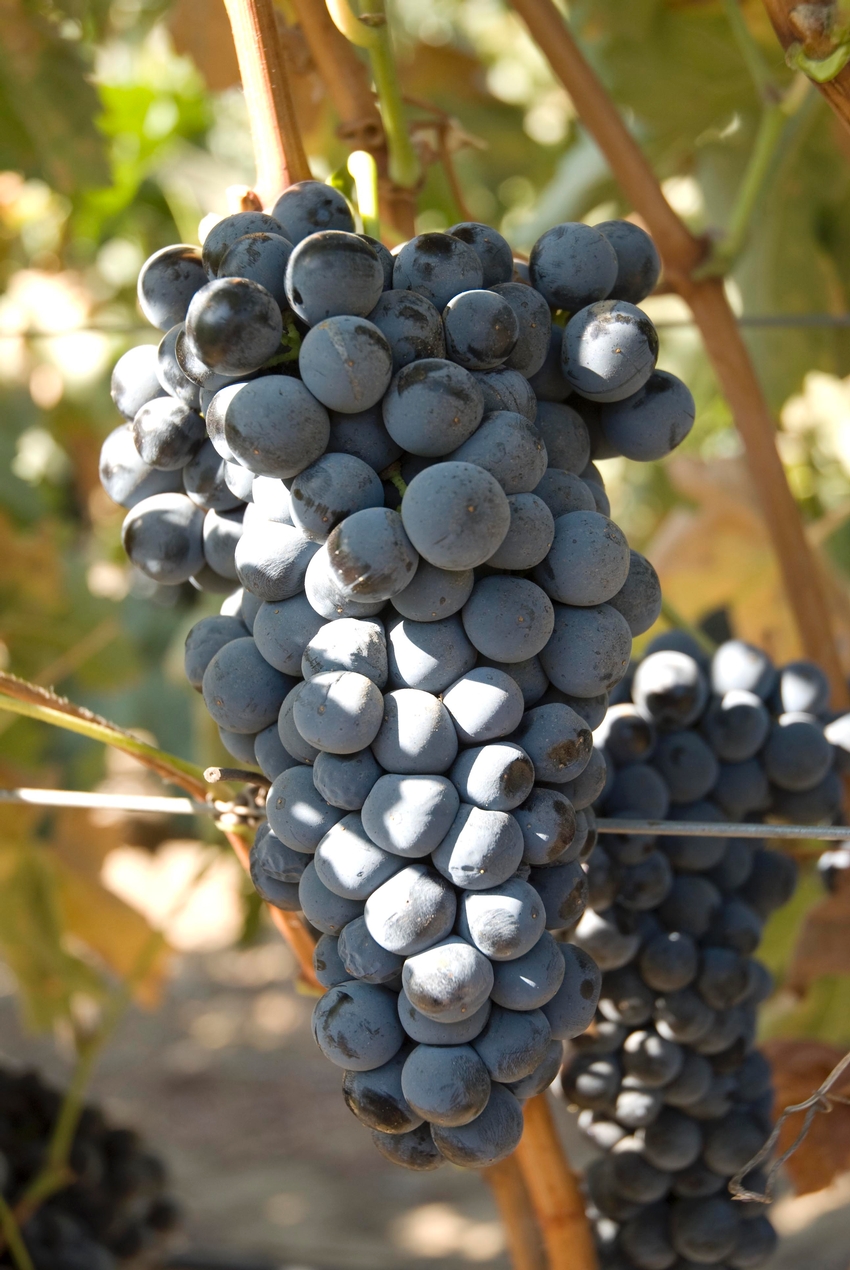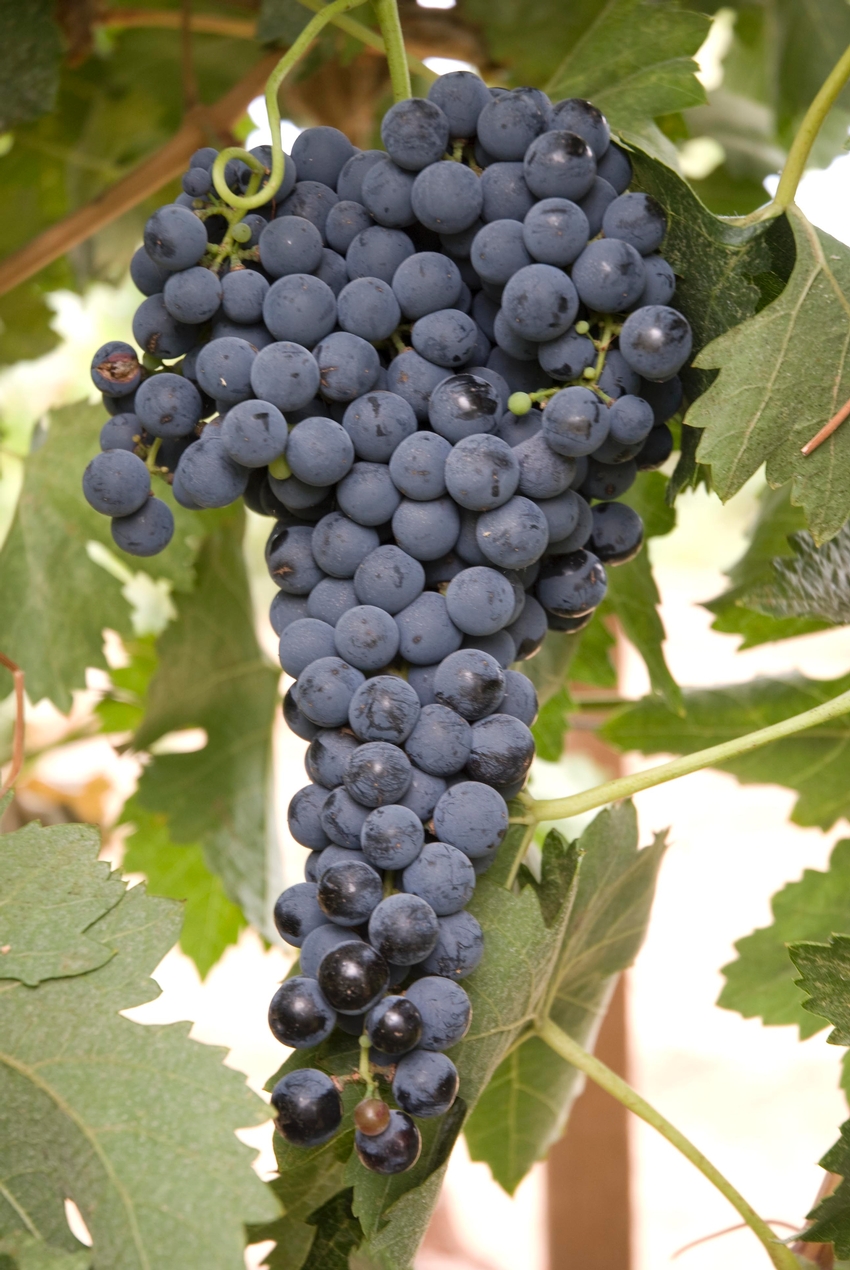| Variety Name |
Tempranillo |
| TTB Approved Name(s) |
Tempranillo (Valdepeñas) |
| Common Synonyms |
Tinta Roríz, Valdepeñas, Aragónez |
| All Synonyms |
Aldepenas, Aragones, Aragónez, Aragónez de Ferra, Aragónez de Elvas, Arganda, Arinto Tinto, Cencibel, Cencibera, Chinchillana, Chinchillano, Chinchilyano, Cupani, Escobera, Garnacho Fono, Grenache de Logrono, Jacibiera, Jacivera, Juan Garcia, Negra de Mesa, Ojo de Liebre, Olho de Lebre, Sensibel, Tempranilla, Tempranillo de la Rioja, Tempranillo de Perralta, Tempranillo de Rioja, Tempranillo de Rioza, Tinta Aragóneza, Tinta Aragónes, Tinta de Santiago, Tinta de Toro, Tinta del País, Tinta do Inacio, Tinta Monteiro, Tinta Roríz, Tinta Roríz da Penajola, Tinta Santiago, Tinto Aragon, Tinto de la Rioja, Tinto de Madrid, Tinto de Rioja, Tinto de Toro, Tinto del País, Tinto Fino, Tinto Fino Ull de Llebre, Tinto Madrid, Tinto País, Tinto Ribiera, Tinto Riojano, Ull de Llebre, Valdepeñas, Valdepenhas, Verdiell, Vid de Aranda |
| Countries of Origin |
Spain |
| Species |
Vitis vinifera
|
| References |
- Christensen, L et al. 2003. Wine Grape Varieties in California. University of California Agriculture and Natural Resources Publication 3419.
- ENTAV. Catalogue of Selected Wine Grape Varieties and Clones Cultivated in France.1995. Ministry of Agriculture, Fisheries and Food CTPS. France.
- Robinson, J. 2006. The Oxford Companion to Wine. Third edition. Oxford University Press.
- Vitis International Variety Catalogue (VIVC). Federal Centre for Breeding Research on Cultivated Plants (BAZ).
Institute for Grapevine Breeding Geilweilerhof (IRZ). August, 2007. Link
The former National Grape Registry (NGR) was initially compiled and annotated using the earlier version of the Vitis database. The VIVC underwent a significant update beginning in 2007. Corresponding updates to this Registry will be made as necessary.
- Calo, A. et al. 2001. Vitigni d’Italia. Edagricole-Edizioni Agricole della Calderini. Bologna, Italy. (In Italian)
- Alcohol and Tobacco Tax and Trade Bureau (TTB). Code of Federal Regulations Title 27 Part 4.91 List of approved prime names. Link
- Rubio J.A. and J. Yuste. 2004. Ampelographic Differentiation of Tempranillo Clones from Different Area of Origin, According to Their Synonyms. Proc. 1st IS on Grapevine, Eds. Ó.A. de Sequeira & J.C. Sequeira. Acta Hort. 652, ISHS 2004.
- Borrego et al. 2000. Characterisation of the Most Important Spanish Grape Varieties Through Isozyme and Microsatellite Analysis. Proc. Int. Symp. On Molecular Markers, Eds. Doré. Dosba & Baril. ISHS Acta Horticulturae 546.
- Martín et al. 2006. Determination of relationships among autochthonous grapevine varieties (Vitis vinifera L.) in the Northwest of the Iberian Peninsula by using microsatellite markers. Genetic Resources and Crop Evolution 53: 1255-1261.
|
| Berry Color |
Black |
| Uses |
Table,Wine |
| Comments |
Although DNA analysis has demonstrated that Tempranillo de Rioja, Cencibel, Tinto del País, Tinto de Toro and Aragónez (Portugal) all share the same DNA profile (see references 49 and 50), clonal studies in Spain have shown some differences when the Tempranillo variety is grown in different regions (see reference 47). |
How Selection Numbers are Created
Questions are often asked as to how Foundation Plant Services (FPS) decides which number to assign to the grape selections in the foundation vineyard and whether those numbers relate to particular clones that may be the sources of the FPS selections.
The answer for most selections in the FPS foundation vineyard is that selection numbers are assigned by the next available (unused) number in sequence for that variety. There is nothing magical about it. For example, the first Sauvignon blanc selection that came to FPS in 1958 was named Sauvignon blanc FPS 01. The next Sauvignon blanc arrival received the name Sauvignon blanc FPS 02. Gaps in the numbering system in the current list of available selections mean that the omitted number was taken out of circulation for some reason, such as death from disease.
FPS intentionally chose the word "selection" rather than "clone" when referring to the products offered in the foundation vineyard. The word "clone" can be confusing and ambiguous. The major European collections have formal evaluation protocols for grape material to qualify material for release as an official "clone". Evaluation criteria includes field performance and wine making characteristics.
FPS does not perform formal clonal evaluations on the grapevine materials accepted for the foundation vineyard. The word "selection" at FPS simply means the material was collected from a single source vine from the vineyard of origin, whether within the United States or from a foreign vineyard. Some of our numbered selections have been through trials here in California but FPS does not conduct those trials or evaluations.
Having said that, there is a subgroup of selections at FPS that are official numbered clones from the formal clonal development programs in Europe. Those official clones are imported and sold by the owners as proprietary (trademarked) clonal material in the United States. The owners are large government or nursery entities in Europe, such as the ENTAV-INRA® clonal material from the IFV program in France. In order to preserve the identity of those clones, FPS agreed to assign them the same official clone number that the program in Europe gave them when released there. Cabernet Sauvignon 685 from France received the name Cabernet Sauvignon ENTAV-INRA® 685 at FPS. The owners of those proprietary clones are the ones who vouch for or affirm the authenticity of their trademarked clones.
Lastly, there is a small subset of "clones" that came to FPS in the 1980's prior to the establishment of the trademark programs for the European clones. Those clones also came to the United States associated with clone numbers assigned when the clones were developed in Europe. Many of the French clones in that group were developed at Dijon in France and the material has been known as the "Dijon clones". Those French clones were not protected by an official trademark program at the time they came to the United States. Some of those clones are no longer used in France and some were incorporated into the ENTAV-INRA trademark program.
FPS refers to this subset of clones as "generic clonal material". FPS agreed that we would assign those non-proprietary clones a new number at FPS rather than the European clonal number. They received their FPS numbers using the "next in order" rule. We may have a note on the plant description that the selection is "reported to be a certain French clone number". FPS cannot guarantee that such a selection is the official French clone number that it was formally associated with in France.
| |
Tempranillo 02
|
| Registration Status |
Registered
Registered is the ultimate status in the California Department of Food & Agricultures Grapevine Registration & Certification Program. Registered selections have successfully completed all disease testing required by the regulations. Registered selections have also been confirmed as true to variety by experts using visual observations, DNA-based testing or both.
|
| Source |
Agro 2001 Nursery, Spain |
| Treatments |
None, RSP+
|
| Comments |
USDA-ARS plant pathologist Dr. Austin Goheen imported this Tempranillo selection around 1983 from the AGRO 2001 Nursery in the La Rioja region of Spain. Tempranillo 02 has qualified for the Russell Ranch Foundation Vineyard (see Tempranillo 02.1). |
| |
Tempranillo 03
|
| Registration Status |
Registered
Registered is the ultimate status in the California Department of Food & Agricultures Grapevine Registration & Certification Program. Registered selections have successfully completed all disease testing required by the regulations. Registered selections have also been confirmed as true to variety by experts using visual observations, DNA-based testing or both.
|
| Source |
Reported to be Spanish clone 43, EIA Logroño Institute, Spain, via a California vineyard (Mendocino County) |
| Treatments |
None, RSP+
|
| Comments |
This selection came to Foundation Plant Services in 1998 from EIA Logroño Institute, Spain, via a Mendocino County, California, vineyard. The material is reported to be Spanish clone 43. After successful completion of testing for the California Grapevine Registration & Certification Program, Tempranillo 03 was planted in the FPS Classic Foundation Vineyard in 2000. Spanish clone 43 is reportedly a good clone that was propagated by a famous large-scale grower [who wishes to remain anonymous] in the south of Spain. It was part of an older generation Tempranillo that was clonally selected for health and production. |
| |
Tempranillo 05
|
| Registration Status |
Registered
Registered is the ultimate status in the California Department of Food & Agricultures Grapevine Registration & Certification Program. Registered selections have successfully completed all disease testing required by the regulations. Registered selections have also been confirmed as true to variety by experts using visual observations, DNA-based testing or both.
|
| Source |
CL-242, Instituto Tecnológico Agrario de Castilla y León (ITACyl), Valladolid, Spain |
| Treatments |
None , Tissue Culture Excision
|
| Comments |
This selection was one of a group of Spanish clones that came to Foundation Plant Services in 2000 from the clonal selection program at the Instituto Tecnológico Agrario de Castilla y León (ITACyL) in Spain. The source of this selection is CL-242, which stands for 'Castilla y León 242'. According to Dr. Jesús Yuste, who sent the clone to the United States, Tempranillo clone 242 is associated with the synonym Tinta del País in Spain. The synonym name evolved as the grape was grown and developed in the Ribera del Duero in the Castilla y León region of north-central Spain, around Burgos, Segovia, Soria and Valladolid. The Ribera del Duero wine region runs along the Duero river. The plant material successfully completed testing for the California Grapevine Registration & Certification Program at FPS and was planted in the FPS Classic Foundation Vineyard in 2003. |
| |
Tempranillo 06
|
| Registration Status |
Registered
Registered is the ultimate status in the California Department of Food & Agricultures Grapevine Registration & Certification Program. Registered selections have successfully completed all disease testing required by the regulations. Registered selections have also been confirmed as true to variety by experts using visual observations, DNA-based testing or both.
|
| Protocol 2010 |
Qualifies for Protocol 2010.
|
| Source |
Tempranillo FPS 01 |
| Treatments |
Heat treatment 102 days; Micro shoot tip culture
|
| Comments |
Tempranillo FPS 01 came to Davis from the Instituto Nacional de Investigaciones Agronómicas in Madrid, Spain, in 1971. Tempranillo FPS 01 was first registered in California in 1979 but was later (1981) removed from the list for being RSP+. Tempranillo FPS 06 was produced from Tempranillo FPS 01 plant material using micro shoot tip tissue culture propagation and was first registered in California under the new number in 2006. |
| |
Tempranillo 07
Top
|
| Registration Status |
Registered
Registered is the ultimate status in the California Department of Food & Agricultures Grapevine Registration & Certification Program. Registered selections have successfully completed all disease testing required by the regulations. Registered selections have also been confirmed as true to variety by experts using visual observations, DNA-based testing or both.
|
| Source |
Italy |
| Treatments |
None, RSP+
|
| Comments |
This selection was imported by a California winemaker from Italy in 1995 and was initially labelled 'Malvasia nera'. The original material successfully completed testing for the California Grapevine Registration & Certification Program and was planted in the FPS Classic Foundation Vineyard in 1999. In 2003, DNA analysis confirmed a prior visual analysis and opinion by Dr. Jean-Michel Boursiquot that the selection appeared to be Tempranillo. The name was changed and the selection was registered as Tempranillo FPS 07 in 2003. |
| |
Tempranillo 11
Top
|
| Registration Status |
Registered
Registered is the ultimate status in the California Department of Food & Agricultures Grapevine Registration & Certification Program. Registered selections have successfully completed all disease testing required by the regulations. Registered selections have also been confirmed as true to variety by experts using visual observations, DNA-based testing or both.
|
| Source |
CL- 292, Instituto Tecnológico Agrario de Castilla y León (ITACyl), Valladolid, Spain |
| Treatments |
None , Tissue Culture Excision
|
| Comments |
This selection was one of a group of Spanish clones that came to Foundation Plant Services in 2000 from the clonal selection program at the Instituto Tecnológico Agrario de Castilla y León (ITACyL) in Spain. The source of the selection is CL-292, which stands for 'Castilla y León 292', which is a Tinto de Toro Tempranillo clone. The plant material successfully completed testing for the California Grapevine Registration & Certification Program and was planted in the FPS Classic Foundation Vineyard in 2002. |
| |
Tempranillo 12
Top
|
| Registration Status |
Registered
Registered is the ultimate status in the California Department of Food & Agricultures Grapevine Registration & Certification Program. Registered selections have successfully completed all disease testing required by the regulations. Registered selections have also been confirmed as true to variety by experts using visual observations, DNA-based testing or both.
|
| Source |
Ribera del Duero, Spain |
| Treatments |
None, RSP+
|
| Comments |
California viticulturist and winemaker Markus Bokisch donated this selection to the Foundation Plant Services public collection in 2001. He reports that the selection is a Tinto Fino type Tempranillo from the Ribera del Duero region in Spain. The clone has small berries and small clusters. The original material successfully completed testing for the California Grapevine Registration & Certification Program and was planted in the FPS Classic Foundation Vineyard in 2006. |
| |
Tempranillo 13
Top
|
| Registration Status |
Registered
Registered is the ultimate status in the California Department of Food & Agricultures Grapevine Registration & Certification Program. Registered selections have successfully completed all disease testing required by the regulations. Registered selections have also been confirmed as true to variety by experts using visual observations, DNA-based testing or both.
|
| Source |
Clone CL 98, ITACyL, Spain |
| Treatments |
None
|
| Comments |
This selection came to Foundation Plant Services in 2006 from the collection at the Instituto Tecnológico Agrario de Castilla y León (ITACyL) in Spain. The material is clone CL 98, which is a 'Tinta del País' type, and is from a vineyard in Valladolid. |
| |
Tempranillo 14
Top
|
| Registration Status |
Registered
Registered is the ultimate status in the California Department of Food & Agricultures Grapevine Registration & Certification Program. Registered selections have successfully completed all disease testing required by the regulations. Registered selections have also been confirmed as true to variety by experts using visual observations, DNA-based testing or both.
|
| Source |
CL 306, ITACyL, Spain |
| Treatments |
None
|
| Comments |
This selection came to Foundation Plant Services in 2066 from the Instituto Tecnológico Agrario de Castilla y León. the material is clone CL 306, a 'Tinta de Toro' type, and is from a vineyard in Valladolid. |
| |
Tempranillo 16
Top
|
| Registration Status |
Registered
Registered is the ultimate status in the California Department of Food & Agricultures Grapevine Registration & Certification Program. Registered selections have successfully completed all disease testing required by the regulations. Registered selections have also been confirmed as true to variety by experts using visual observations, DNA-based testing or both.
|
| Source |
Jorge Boehm, Viveiros Plansel, S.A., Portugal |
| Treatments |
None, RSP+
|
| Comments |
Jorge Boehm donated this selection (JPB clone 593) to the Foundation Plant Services public grapevine collection in 2007. The original plant material qualified for the FPS Classic Foundation Vineyard in 2009. |
| |
Tempranillo 17
Top
|
| Registration Status |
Registered
Registered is the ultimate status in the California Department of Food & Agricultures Grapevine Registration & Certification Program. Registered selections have successfully completed all disease testing required by the regulations. Registered selections have also been confirmed as true to variety by experts using visual observations, DNA-based testing or both.
|
| Source |
Jorge Böhm, Viveiros Plansel S.A., Portugal |
| Treatments |
None, RSP+ , Tissue Culture Excision
|
| Comments |
This selection came to Foundation Plant Services in 2007 from Jorge Böhm, Viveiros Plansel S.A., in Portugal. The selection was donated to the FPS public grapevine collection at that time. The orginal material successfully completed testing to qualify for the Classic Foundation Vineyard in 2009 and was planted there under the name Tempranillo 17. |
| |
Tempranillo 18
Top
|
| Registration Status |
Registered
Registered is the ultimate status in the California Department of Food & Agricultures Grapevine Registration & Certification Program. Registered selections have successfully completed all disease testing required by the regulations. Registered selections have also been confirmed as true to variety by experts using visual observations, DNA-based testing or both.
|
| Source |
Jorge Böhm, Viveiros Plansel, S.A., Portugal |
| Treatments |
None, RSP+ , Tissue Culture Excision
|
| Comments |
This selection came to Foundation Plant Services in 2007 from Jorge Böhm, Viveiros Plansel S.A., in Portugal. The material was donated to the FPS public grapevine collection at that time. The original material successfully completed testing to qualify for the California Grapevine Registration & Certification Program in 2009 and was planted in the Classic Foundation Vineyard. |
| |
Tempranillo 19
Top
|
| Registration Status |
Registered
Registered is the ultimate status in the California Department of Food & Agricultures Grapevine Registration & Certification Program. Registered selections have successfully completed all disease testing required by the regulations. Registered selections have also been confirmed as true to variety by experts using visual observations, DNA-based testing or both.
|
| Source |
Jorge Böhm , Viveiros Plansel S.A., Portugal |
| Treatments |
None , Tissue Culture Excision
|
| Comments |
This selection was donated to the Foundation Plant Services public grapevine collection in 2007 by Jorge Böhm, Viveiros Plansel S.A., in Portugal. It is the 'Tinto del País' type Tempranillo and was imported to FPS under that name. The original material successfully completed testing to qualify for the California Grapevine Registration & Certification Program in 2009 and was planted in the Classic Foundation Vineyard under the name Tempranillo FPS 19. |
| |
Tempranillo 19.1
Top
|
| Registration Status |
Registered
Registered is the ultimate status in the California Department of Food & Agricultures Grapevine Registration & Certification Program. Registered selections have successfully completed all disease testing required by the regulations. Registered selections have also been confirmed as true to variety by experts using visual observations, DNA-based testing or both.
|
| Protocol 2010 |
Qualifies for Protocol 2010.
(This selection planted in Russell Ranch)
|
| Source |
Jorge Böhm, Viveiros Plansel S.A., Portugal |
| Treatments |
Microshoot tip tissue culture therapy
|
| Comments |
This selection was donated to the Foundation Plant Services public grapevine collection in 2007 by Jorge Böhm, Viveiros Plansel S.A., in Portugal. It is the 'Tinto del País' type Tempranillo and was imported to FPS under that name. The original material successfully completed testing to qualify for the California Grapevine Registration & Certification Program in 2009 and was planted in the Classic Foundation Vineyard under the name Tempranillo FPS 19. The original material underwent microshoot tip tissue culture therapy at FPS in 2008 and successfully completed 2010 Protocol testing in 2012. The tissue culture version of the selection was planted at both the Russell Ranch Vineyard and the Classic Foundation Vineyard in 2014 as Tempranillo 19.1. |
| |
Tempranillo 20
Top
|
| Registration Status |
Registered
Registered is the ultimate status in the California Department of Food & Agricultures Grapevine Registration & Certification Program. Registered selections have successfully completed all disease testing required by the regulations. Registered selections have also been confirmed as true to variety by experts using visual observations, DNA-based testing or both.
|
| Source |
Jorge Böhm, Viveiros Plansel S.A., Portugal |
| Treatments |
None
|
| Comments |
This selection was donated to the public grapevine collection at Foundation Plant Services in 2007 by Jorge Böhm, Viveiros Plansel S.A., in Portugal. The material is the Tinto de Toro type Tempranillo and was imported to FPS under that name. The original material successfully completed testing to qualify for the California Grapevine Registration & Certification Program in 2009 and was planted in the Classic Foundation Vineyard as Tempranillo FPS 20. |
| |
Tempranillo 22
Top
|
| Registration Status |
Registered
Registered is the ultimate status in the California Department of Food & Agricultures Grapevine Registration & Certification Program. Registered selections have successfully completed all disease testing required by the regulations. Registered selections have also been confirmed as true to variety by experts using visual observations, DNA-based testing or both.
|
| Source |
Jorge Böhm, Viveiros Plansel S.A., Portugal |
| Treatments |
None, RSP+
|
| Comments |
This selection was donated to the public grapevine collection at Foundation Plant Services in 2007 from Jorge Böhm, Viveiros Plansel S.A., in Portugal. The original material successfully completed testing to qualify for the California Grapevine Registration & Certification Program in 2009. |
| |
Tempranillo 23
Top
|
| Registration Status |
Registered
Registered is the ultimate status in the California Department of Food & Agricultures Grapevine Registration & Certification Program. Registered selections have successfully completed all disease testing required by the regulations. Registered selections have also been confirmed as true to variety by experts using visual observations, DNA-based testing or both.
|
| Source |
Spain |
| Treatments |
None, RSP+
|
| Comments |
This selection was imported for the Foundation Plant Services' public collection in 2008 as part of an ongoing exchange with the Instituto Tecnológico Agrario de Castilla y León (ITACyL), in Valladolid, Spain. The selection is the CL (Castilla León)-311 clone and is the Tinto de Toro type Tempranillo. Tempranillo 23 has qualified for the Russell Ranch Foundation Vineyard (see Tempranillo 23.1). |
| |
Tempranillo 25
Top
|
| |
More information regarding selection available soon. |
| |
Tempranillo 26
Top
|
| Treatments |
Tissue Culture Excision
|
| |
Tempranillo 26.1
Top
|
| Registration Status |
Provisional
Provisional Status is an important term used in the regulations of the California Department of Food & Agriculture's Grapevine Registration & Certification Program. Grapevine selections with Provisional Status have successfully completed all required disease testing, but have not been confirmed as true to variety. Propagation material from Provisional selections qualifies for release subject to the understanding on the part of the customer that the identity has yet to be confirmed.
|
| Protocol 2010 |
Qualifies for Protocol 2010.
|
| Treatments |
Tissue Culture Excision
|
| |
Tempranillo 224
Top
|
| Registration Status |
Provisional
Provisional Status is an important term used in the regulations of the California Department of Food & Agriculture's Grapevine Registration & Certification Program. Grapevine selections with Provisional Status have successfully completed all required disease testing, but have not been confirmed as true to variety. Propagation material from Provisional selections qualifies for release subject to the understanding on the part of the customer that the identity has yet to be confirmed.
|
| Source |
Jorge Böhm, Viveiros Plansel, S.A., Portugal |
| Treatments |
None
|
| Comments |
This selection came to Foundation Plant Services in 2005 from Jorge Böhm, Viveiros Plansel S.A., in Portugal. The material was JPB clone Aragonez 224 (a synonym name for Tempranillo). The original material successfully completed testing to qualify for the California Grapevine Registration & Certification Program in 2007 and was planted in the Classic Foundation Vineyard. It was known in the early days as Aragonez FPS 01 and Aragonez PLANSEL 224 (the PLANSEL clone number). The selection underwent microshoot tip tissue culture therapy at FPS and qualified for the Russell Ranch Vineyard in 2007. The name of the selection was changed in 2016 to Tempranillo PLANSEL 224. After several years as a proprietary selection, Tempranillo 224 was released to the FPS public grapevine collection in 2019. |
| |
Tempranillo 232
Top
|
| Registration Status |
Provisional
Provisional Status is an important term used in the regulations of the California Department of Food & Agriculture's Grapevine Registration & Certification Program. Grapevine selections with Provisional Status have successfully completed all required disease testing, but have not been confirmed as true to variety. Propagation material from Provisional selections qualifies for release subject to the understanding on the part of the customer that the identity has yet to be confirmed.
|
| Source |
Jorge Böhm , Viveiros Plansel S.A., Portugal |
| Treatments |
None , Tissue Culture Excision
|
| Comments |
This selection came to Foundation Plant Services in 2005 from Jorge Böhm, Viveiros Plansel S.A., in Portugal. The material was JPB clone Aragonez 232 (a synonym name for Tempranillo). The original material successfully completed testing to qualify for the California Grapevine Registration & Certification Program in 2007 and was planted in the Classic Foundation Vineyard. It was known in the early days as Aragonez FPS 02 and Aragonez PLANSEL 232 (the PLANSEL clone number). The selection underwent microshoot tip tissue culture therapy at FPS and qualified for the Russell Ranch Vineyard in 2007. The name of the selection was changed in 2016 to Tempranillo PLANSEL 232. After several years as a proprietary selection, Tempranillo 232 was released to the FPS public grapevine collection in 2019. |
| |
Tempranillo 770 (proprietary)
Top
|
| Registration Status |
Registered
Registered is the ultimate status in the California Department of Food & Agricultures Grapevine Registration & Certification Program. Registered selections have successfully completed all disease testing required by the regulations. Registered selections have also been confirmed as true to variety by experts using visual observations, DNA-based testing or both.
|
| Source |
Authorized French clone Tempranillo 770 from ENTAV-INRA |
| Treatments |
None
|
| Proprietary |
Proprietary- cannot be distributed without written permission from owner: ENTAV International
|
| Patented / Proprietary |
Proprietary |
| Comments |
This selection was imported to the United States in 2000 for distribution under the ENTAV-INRA® clonal trademark program. The material is the official French clone, Tempranillo 770. According to Laurent Audeguin of ENTAV, clone 770 is the most propagated certified clone of Tempranillo in France. The clone is distributed by ENTAV-INRA licensees in the U.S. |
| |
Tempranillo 776 (proprietary)
Top
|
| Registration Status |
Registered
Registered is the ultimate status in the California Department of Food & Agricultures Grapevine Registration & Certification Program. Registered selections have successfully completed all disease testing required by the regulations. Registered selections have also been confirmed as true to variety by experts using visual observations, DNA-based testing or both.
|
| Source |
Tempranillo ENTAV-INRA ® 776 |
| Treatments |
None
|
| Proprietary |
Proprietary- cannot be distributed without written permission from owner: ENTAV International
|
| Patented / Proprietary |
Proprietary |
| Comments |
This selection was imported to the United States in 1997 from France by ENTAV-INRA, which manages the trademarked French clonal material. The selection is official French clone 776. The clone originated from the Rioja region in Spain and was previously known in France as ENTAV 60. It was certified in 1982. Tempranillo ENTAV-INRA® 776 qualified for the FPS Classic Foundation Vineyard in 2005. |





